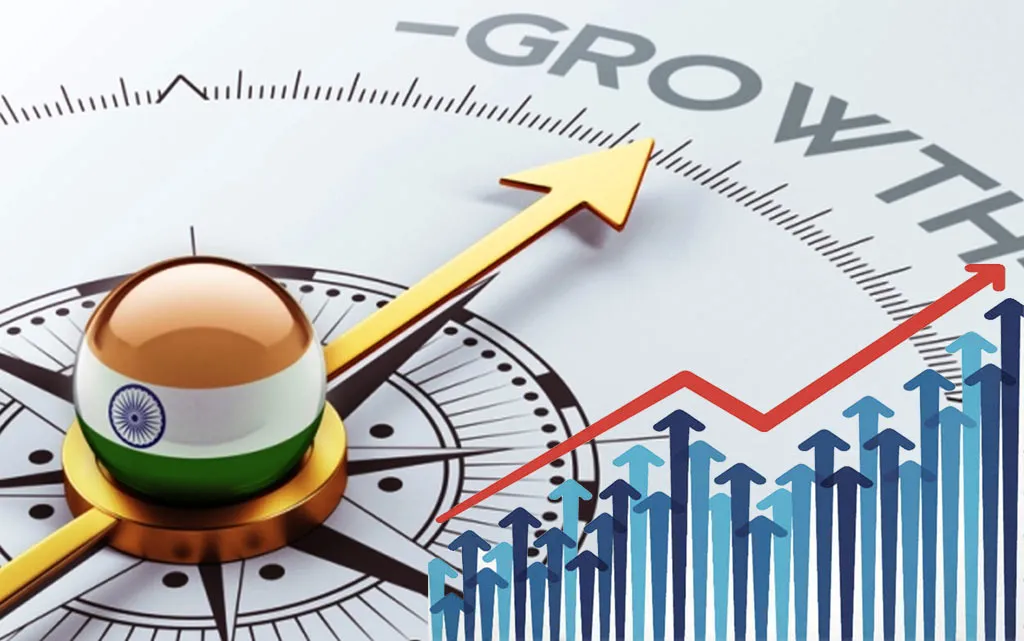India has recently reached a remarkable milestone in its economic journey, securing its position as the 4th largest economy in the world, surpassing Japan. This achievement has been recognized by NITI Aayog CEO Amitabh Kant, who confirmed the country’s new economic standing, highlighting India’s rapid growth and the strides it has made toward becoming a global economic powerhouse. This is not just a symbolic achievement; it underscores the nation’s resilience and its emerging dominance in the global economic landscape.
India’s Economic Leap: A New Global Standing
As of the latest reports, India has overtaken Japan to claim the 4th position, trailing only the United States, China, and Germany in terms of nominal GDP. This shift in rankings has been driven by several factors, including robust domestic consumption, a dynamic services sector, and increased industrial output. Over the past few decades, India has consistently posted impressive growth figures, especially in the post-liberalization era, making this shift in global rankings a reflection of its economic prowess.
In the 2023 World Bank rankings, India’s nominal GDP stands at approximately $3.73 trillion, while Japan’s economy has been measured at around $3.74 trillion, making India’s new position a narrow but significant achievement. This change marks an important shift in the global economic hierarchy, with India now firmly ahead of Japan, a country with a highly developed and technologically advanced economy.
Factors Contributing to India’s Growth Surge
Several key factors have contributed to India’s ascent to the 4th position:
1. Strong Domestic Consumption
India’s domestic market, driven by a population of over 1.4 billion people, has been a major contributor to its economic expansion. As a result of rising incomes, an expanding middle class, and increasing consumer demand, India has become one of the largest consumer markets in the world. The rapid growth in sectors like retail, e-commerce, and consumer goods has been a significant driver of the economy, fostering substantial economic activity.
2. Digital Transformation and Services Sector
India’s services sector has been another key pillar of its growth. The IT and software services industry has been at the forefront of this transformation, with companies like Tata Consultancy Services (TCS), Infosys, and Wipro becoming global players. The digital economy in India is thriving, with innovations in technology, e-commerce, and fintech making significant contributions to the country’s GDP.

The rapid adoption of digital services in both urban and rural areas has enhanced productivity across sectors, from education to healthcare, financial services, and manufacturing. India’s tech startups are thriving, and the country has become a hub for the global outsourcing industry, all of which help boost the nation’s economic prospects.
3. Industrialization and Manufacturing Push
While the services sector has long been a major contributor to India’s GDP, there has been an increasing push for industrialization and manufacturing in recent years. Make in India, an initiative launched by the government, aims to transform India into a global manufacturing hub. The Indian government’s emphasis on infrastructure development, foreign direct investment (FDI), and easier regulatory frameworks has spurred growth in sectors like automotive, chemicals, textiles, and electronics.
India’s manufacturing output has grown steadily, with the country now emerging as a key player in the global supply chain. With initiatives like Atmanirbhar Bharat, the government is also working towards reducing reliance on imports and increasing self-reliance in critical sectors, further boosting industrial growth.
4. Stable Economic Reforms
The Indian government’s economic reforms in recent years have played a vital role in supporting this growth trajectory. Key reforms such as the Goods and Services Tax (GST), banking sector restructuring, and corporate tax cuts have created a more streamlined and business-friendly environment, attracting foreign investments and fostering entrepreneurship.
Moreover, India’s commitment to long-term sustainability goals, including green energy and climate change initiatives, is positioning the country as a leader in the global shift toward a greener economy.
NITI Aayog CEO Amitabh Kant’s Comments on the Economic Milestone
In his statement, Amitabh Kant, the CEO of NITI Aayog (National Institution for Transforming India), emphasized that India’s rise to the 4th largest economy is not an overnight accomplishment. Instead, it is the result of decades of economic policies, strategic decisions, and persistent efforts to build a more resilient economy.
Kant attributed India’s remarkable economic progress to its young workforce, growing industrial base, and the government’s focus on inclusive growth. The rise in foreign investments and India’s position as one of the world’s fastest-growing economies were also cited as critical factors behind this achievement.
He also pointed out that India’s strong GDP growth despite global challenges such as the COVID-19 pandemic and geopolitical tensions further underscores the resilience of the Indian economy. The country’s ability to maintain a stable growth rate in the face of such challenges reflects the strength and adaptability of its economic foundations.
The Road Ahead: Challenges and Opportunities
While India’s new economic ranking is a testament to its growth, challenges remain. The nation still faces significant hurdles, such as income inequality, poverty, and job creation. Though India’s economy is growing rapidly, it must ensure that this growth is inclusive and reaches all segments of society.
Additionally, infrastructure development and supply chain resilience will be key areas where India needs to continue making investments. As the 4th largest economy, India will need to ramp up its global trade relationships, innovate further in sectors like artificial intelligence, renewable energy, and biotechnology, and ensure that its workforce is equipped with the skills required to thrive in a fast-evolving global economy.
Key Areas for Further Economic Expansion:
-
Green Technologies: With India’s commitment to achieving net-zero emissions by 2070, there is a growing opportunity to invest in green energy and sustainable industries. Transitioning to a more eco-friendly economy will not only reduce India’s carbon footprint but also open new avenues for economic growth.
-
Digital Economy: India’s digital transformation is still in its early stages. The expansion of digital infrastructure, e-commerce, and fintech could accelerate India’s growth even further, making it a global leader in the tech space.
-
Foreign Direct Investment (FDI): India’s efforts to ease regulatory hurdles and attract foreign capital will likely drive further economic expansion. With its large consumer market and growing industrial capabilities, India offers attractive opportunities for global investors.
India’s Global Role: Moving Beyond the 4th Position
While the 4th largest economy ranking is a monumental achievement, India has set its sights on greater global economic influence. With growing trade partnerships, particularly in the Indo-Pacific region, and its active role in multilateral organizations like the World Trade Organization (WTO) and BRICS, India is positioning itself to be a key player in shaping the future of the global economy.
India’s youthful workforce, large consumer base, and rising technological capabilities make it a formidable force in the global economic order. While its current standing may be a milestone, it is only the beginning of what promises to be a prolonged period of growth and transformation.
A Bright Future for India
India’s ascension to the 4th largest economy is a remarkable achievement that underscores its rapid growth, resilient economic policies, and the strength of its services and industrial sectors. As recognized by Amitabh Kant, this economic milestone represents the culmination of decades of hard work, reform, and strategic planning.
Moving forward, India has the potential to challenge and perhaps even surpass Germany in the near future, continuing its march toward becoming one of the world’s leading economic powers. The government, industry leaders, and the Indian people must continue working together to ensure that growth remains inclusive and sustainable, benefiting all sectors of society.
The next few decades are crucial in determining whether India will maintain its current trajectory and further cement its place as an economic powerhouse. With the right policies, innovation, and investments, India is set to shape the future of the global economy.
